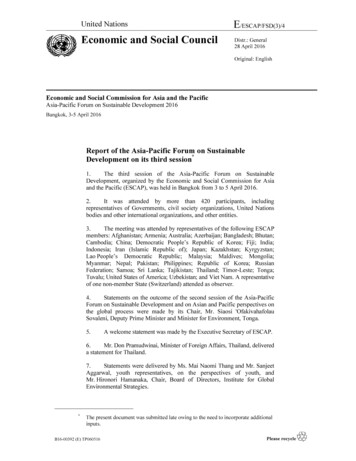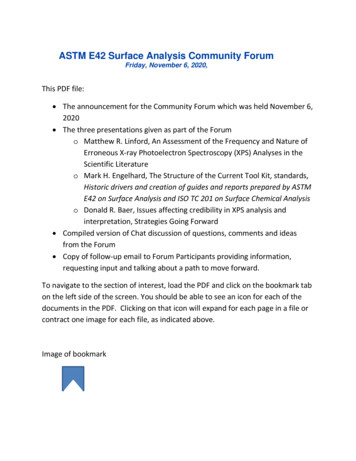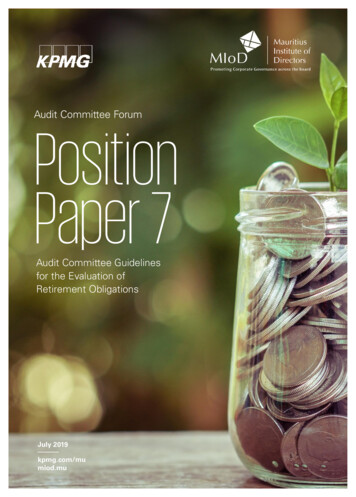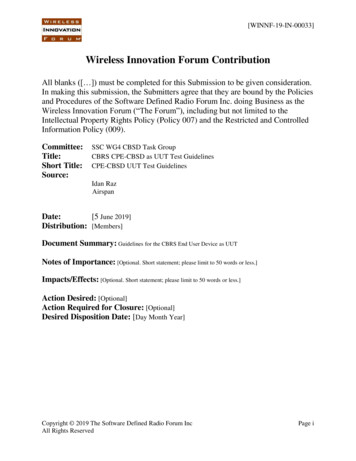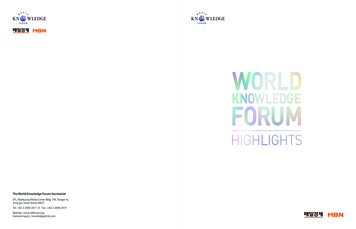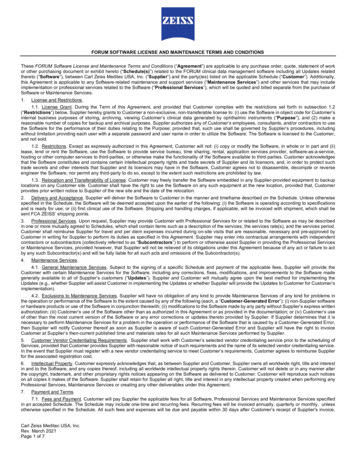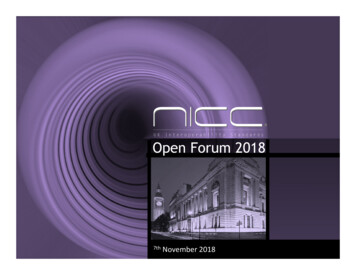
Transcription
Open Forum 201808/11/20187thNovember 2018NICC Standards Limited
Emergency Location WG Focus on securely providing location for 999/112 to:- allow 999/112 emergency calls to be swiftly connected tocorrect local emergency authorities (EAs) and- enable (quicker) response for citizens as EAs have location- meet/inform regulatory expectations Membership is currently :CPs: EE, O2, Resilient, VM, Vodafone, KCOM, Magrathea and BTSuppliers: Atos, Metaswitch, Oracle and RibbonGovernment Agencies: NCSC/CPNI, OfcomWe’d like more representatives, especially from ISPs and VSPs –please can NICC members help find willing participants .08/11/2018NICC Standards Limited
Emergency Location WG –publications ND1013 Emergency Location Information Interface- defines the interface to be used between mobile network operators and emergency handlingauthorities within the UK to transport location information associated with 999/112 voice calls. ND1432 SIP-PBX Configurations to Support EmergencyService- identifies configuration options available to the enterprise’s Network Maintainer to allow theEmergency Service to operate quickly/reliably in multi-site deployments- not all CPs provide the same options : an enterprise and its Private Network Maintainer must workwith CPs to determine the most appropriate option for the particular enterprise’s desired configurationand for the safety of its employees. ND1638 VOIP - Location for Emergency Calls- specifies a practical solution for identifying the physical locations of VoIP callers to UK emergencyservices, and for providing sufficient location information to the 999/112 service (basic caseonly) warning message on the public site about not implementing until ND1519 is complete TSG 022 - Routeing of Emergency Calls in the UK- describes principles currently used in the UK’s SS7 networks that have evolved over the last 30years to prioritise and protect emergency calls- help formulate requirements to enable the support of the service in the networks as SIPelements are introduced08/11/2018NICC Standards Limited
Current Work 1: Delivery of SIP999 calls in the UK - TSG 023 Requirements for emergency calls carried over SIP networks Uses the principles successfully used in the UK’s SS7 networks to prioritiseand protect emergency calls (TSG022) Sessions initiated by SIP - still primarily voice, though they could include textor video at some point Call Servers, SBCs and Firewalls, along with equivalent nodes in IMSnetworks, all in scope . Stage 1 PSAP planned to be SIP based by end 2019/early 2020 Issue 1 currently under EmLoc TG final review prior to seeking TSG approval:- identify mechanisms for all aspects of priority (signalling, media, bearer andaccess) so they can be applied for use in SIP-based emergency calls- include location information in SIP messages from both the originating enduser’s equipment, and/or inserted by the originating VSP, to be forwarded tothe Stage 1 PSAP- identify the key interworking needed between SIP and SS7 networks08/11/2018NICC Standards Limited
Implications of TSG023 – examplesof priority other needs for 999 Priority shall be signalled by the inclusion of a Resource Priority header field(ND1035) At nodes, use differential SIP Call Admission Control, Rate Limits and reservedbearer bandwidth, along with load-sharing across multiple routes Consideration of IP layer too : use of Expedited Forwarding (RFC 2474) VSPs – to support urn:service:sos, as well as 999 112, a VSP ID, PAID (valid NN)and From Header. Must support at least G.711 A-law codec. Ongoing support for “out-of-band” location (including “ii” digits, cell/zone IDsand AML) but need to consider SIP Location Conveyance (ETSI ES 203 283). TDM to IP interworking is expected to be needed for a considerable period asthe Stage 1 PSAP, large numbers of Stage 2 PSAPs and CPs will make theprogression to SIP over several years .08/11/2018NICC Standards Limited
Current Work 2 – locatingVoIP callers UK review of ETSI architecture (and protocols) for locatingVoIP emergency calls . .impacts on ISPs, as well as VoIP SPs, transit networksand 999 CHA/PSAP Develop a UK profile of the ETSI standard explaining howarchitecture and protocols can be implemented Apply to specific complex use cases of Wi-Fi access and IPMultimedia Subsystem (IMS) networks08/11/2018NICC Standards Limited
ETSI ES 203 178 and ETSI 203 283AnywhereCountry AVSP AggregationProvider (VAP)VAE (VSPAggregatingEntity)Voice ServiceProvider (VSP)ieEmergency CallService Provider(ECSP)ieVSP CallControlieESRF (EmergencyService RouteingFunction)inibLS ver (LS)UEAccess NetworkProviderESRP (EmergencyService STN-PSAPEmergencyCaller08/11/2018NICC Standards Limited
Implementing in UK ISPs to provide Location Information Server (LIS) that tracks to whichgeographic access point an IP address is currently allocated new interfaces to LIS for VSPs for 999 CHA/PSAP VSPs to find caller location info, to route call and to providelocation(reference) to emergency services : network location device location * new interfaces for VSP to discover and access appropriate ISP LIS use of SIP location header in messaging Vendors/Providers of SBCs are affected (as well as those providingCPs’ Call Servers) : to allow IP “Flows” to be tracked across them, andnot to remove vital information*When available08/11/2018NICC Standards Limited
Thank You08/11/2018NICC Standards Limited
imServer (LS) ESRF (Emergency Service Routeing Function) LS Discovery Location Route Server LS Proxy in VAE (VSP Aggregating Entity) VSP Aggregation Provider (VAP) ie ie ig il . 08/11/2018 NICC Standards Limited ISPs to provide Location Information Server (LIS) that tracks to which

